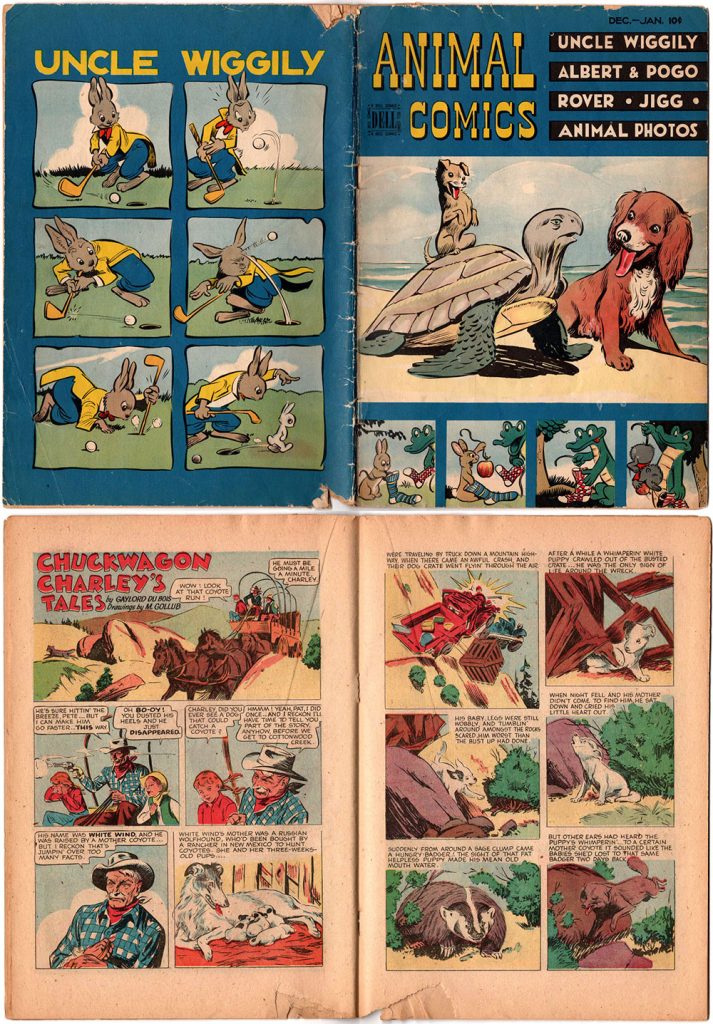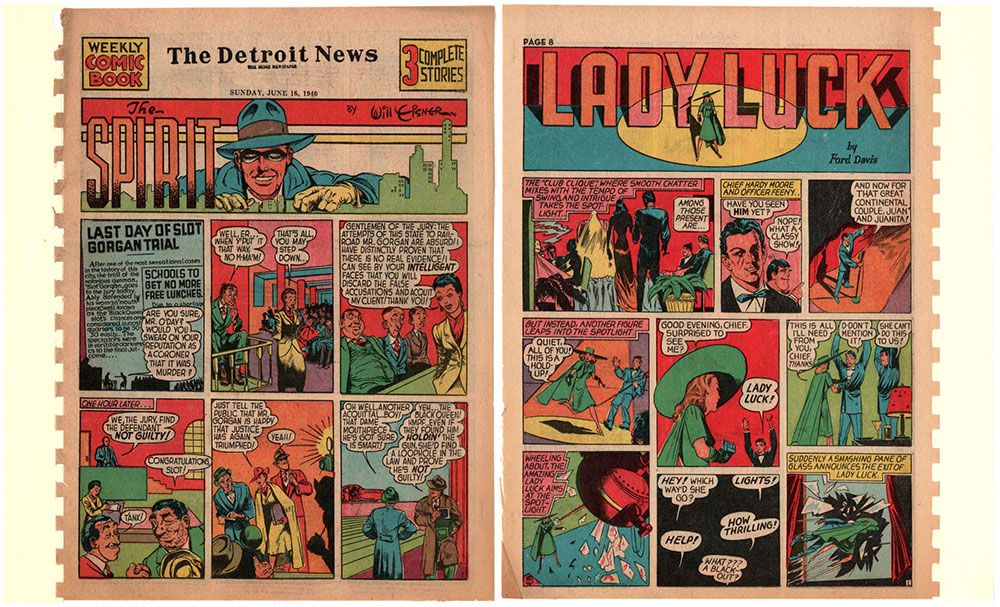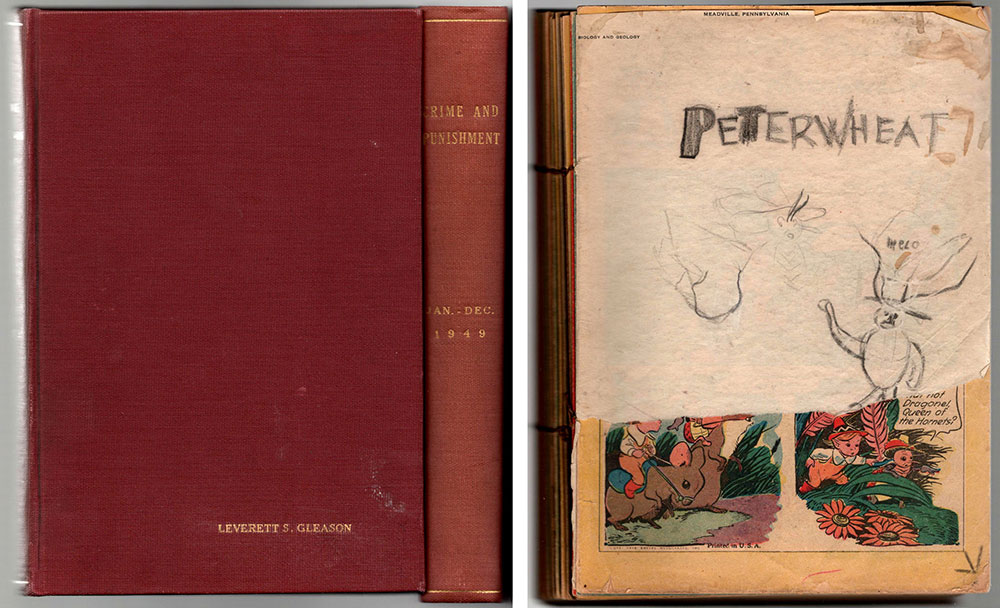MAGGIE’S WORLD BY MAGGIE THOMPSON
Maggie’s World 092: Damage

A look at comic-book price guides provides vivid evidence of the importance to collectors of the preservation of four-color treasures. I keep an eye out for beat-up copies of items on my want list, because they can be the most economical way to read the originals. Why? Because the comics to which we used to refer as “Newsstand Mint” can come at a cost many times higher than the tattered versions of those same editions.
I long ago gave up the idea of buying even the most damaged copy of Amazing Fantasy #15, but, if I were looking for one, I would probably have to pay a twentieth of what a near-perfect copy might bring. (One of those near-perfects sold at Heritage Auctions last year for $795,000, so … As I say, I gave up that idea long ago.)
Memories
Look at photos of people young and old (but mostly young) reading comics in the Golden Age. [“Golden Age” is a term that some seem to be discarding now, but we know what I mean, right? Mind you, we used to say, “The Golden Age is 12”—which is to say that adults in the 1960s looked back at the comics they loved when they were 12 (in the 1940s and early 1950s) and deemed them precious.]

When I began to collect comics in the mid-1940s, I was 3 years old, and Mom and Dad encouraged me. But keeping those comics in good shape was tricky, because (as we know only too well) comics disintegrate on their own and are fragile. I don’t think most of us realized it then, though. We tended to treat them casually, not knowing that, for example, the paper had a high sulfur content. That meant that exposure to heat, moisture, and light led to chemical reactions that, in effect, made comic book newsprint burn itself. The best way to preserve a comic book was to keep it cold, dry, and in the dark. Oh—and, by the way, to avoid handling it as much as possible. Which—yeah.
I do have a few comics that I bought (for a dime!), when I was 5 or younger.
But “bag and board them”? Hardly.
But do consider this, before you judge the comics collectors of the 1940s, 1950s, and early 1960s harshly:
When I was learning to read via my comic books in the 1940s, Mom and Dad wouldn’t have had plastic bags in the kitchen that I could have appropriated to protect my four-color treasures. (I’m still trying to nail down a definitive date for when the first food-storage bags hit grocery-store shelves, but I’m thinking they were Baggies in the late 1950s.)
A couple of decades later, Don and I attended Jerry Bails’ “Alley Tally” party in Detroit, where we were intrigued by Jerry’s device of storing comics in some sort of hanging plastic bag arrangement. Nope! I don’t remember more about it. But I do know we were still trying to figure out how best to keep our comics safe. We weren’t bagging them; we maintained our back issues in boxes and piles, and I think one challenge was identifying which of us had read which copies.
A bagging footnote: In 1970, Bob Overstreet’s first price guide had ads—but they weren’t for comics bags. By his second price guide (1972), though, there were two, one specifying “Marvel comic bags” and adding “larger bags for Golden Age comics also available at the same price.”
What could go wrong?
One way to identify the threats to the comics we owned is to consider a list of defects (and we always used to look for the best copy among those on sale).
Defects from the provider include off-register color, poor trim, subscription crease, arrival stamp, or other notations.
Defects from the owner include brittleness, stains, creases, missing parts (cover, contents, both), rounded corners, defaced covers and/or pages, water damage, rolled spine, split or ragged spine, missing staples, faded inks, and missing coupons or other portions.

But yikes!
An added acknowledged defect these days is one or more amateur attempts at repairs.
How many 1940s comic books do I have that had their staples augmented (or replaced) by staples applied in from the spine an eighth of an inch or so?How many split spines were “repaired” by tape? (The worst in that regard was the so-called “Magic Tape.” At least the non-“Magic” varieties tended to fall off with age.)
Did someone think a “color touch” would be an appropriate fix for a slight chip or tear?
Those are things to consider, if you only collect the best of the best. In which case, you may be one of those who will be most reassured by buying comics that have been graded by a third-party service that finds and reports the flaws. It lets buyers know what they’re buying. The advantage: These services began in the numismatic field, where both sides of coins and banknotes are visible and in which counterfeits are a real possibility. The services were then extended to varieties of trading cards, both sides of which are visible. The disadvantage: If you want to read a comic book that has been similarly encased, you’ll need to unencase it.
And one other, by the way: A plastic shell may not protect a printed item from eventual fading from too much sun exposure. Continue to care for what you have. We are only temporary custodians of our treasures.

An action plan!
In the Golden Age, some comic book owners resorted to binding what they had.
These days, it’s not as complicated as binding used to be, thanks to bags, although there are still tricks. If, like me, you enjoy the economies of looking for beat-up old comics, for example, don’t forget to check for a missing centerfold. Dealers used to note “CFO,” which meant “Center Fold Out.” It meant there were middle pages missing. If you don’t know how many pages should be in the issue, you can check the online Grand Comics Database for that issue. For example, consider Animal Comics #30. It’s clear from a look at the center spread that the story page on the right immediately follows the story page on the left. So whew! And the GCD says it has 52 pages. So you could simply count the pages—at which point you’ll realize that the GCD is counting the covers of the issue as four of the 52 pages.
And, once you’ve bought a back issue, you might want to bag it, when you can. (Note: you can actually use food-storage bags and protect several copies at a time, if necessary.)
Decades ago, I was involved in sending some Golden Age comics to a friend of a friend. I apologized for the condition—but the recipient responded that he thought the wear and tear had made the comics more precious. He said the repeated readings of which the damage was a symptom made it clear that the comics had been loved.
Aw.
Maggie’s World by Maggie Thompson appears the second Tuesday of every month here on Toucan!